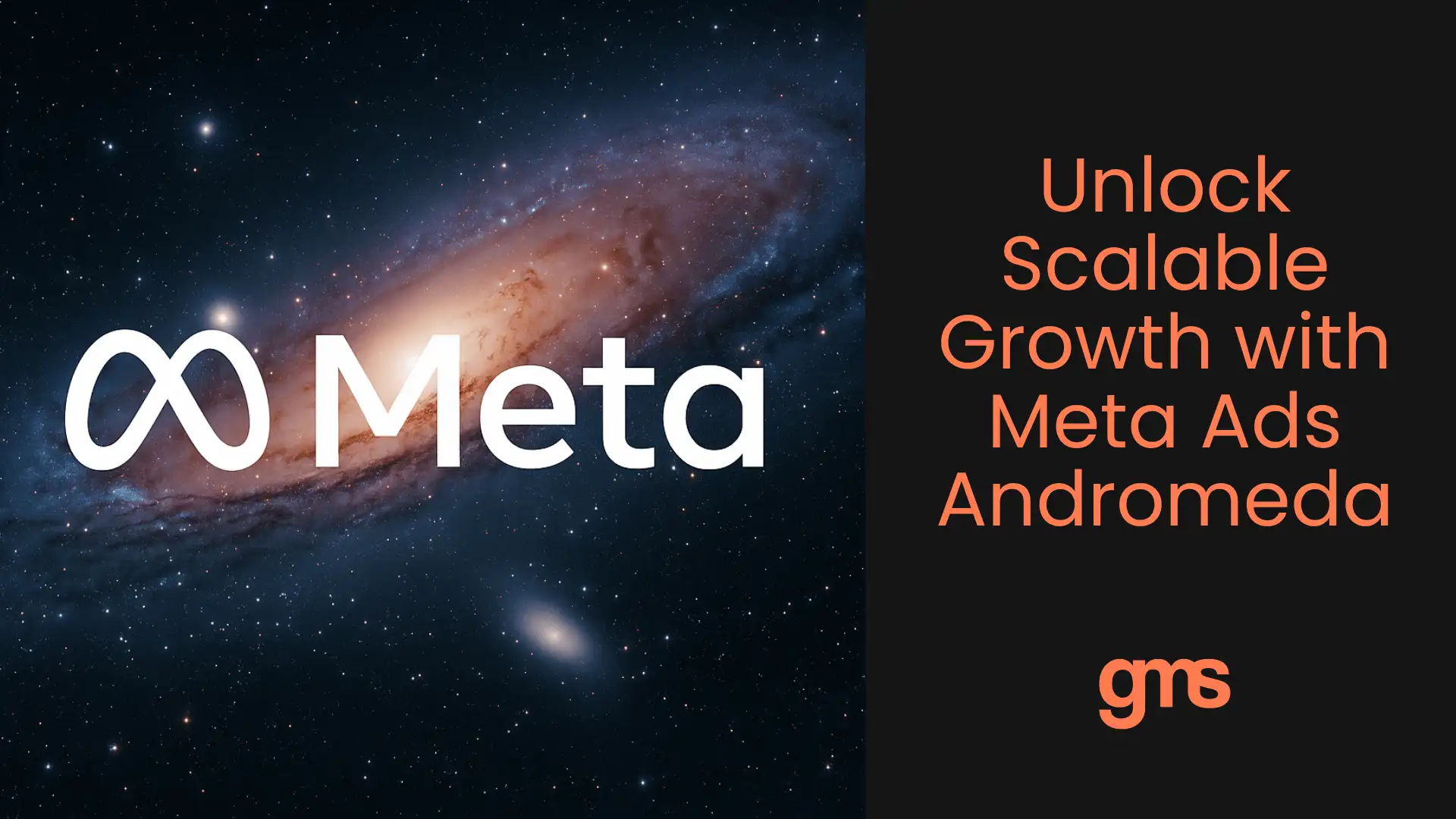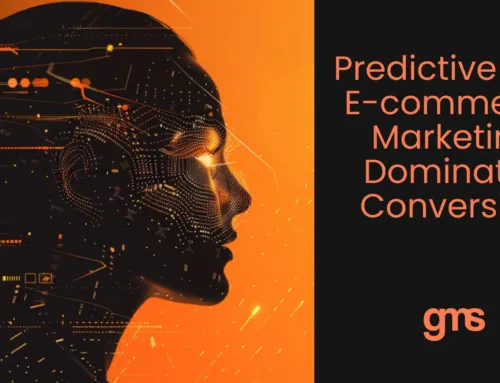Meta Andromeda: How to Fix Facebook & Instagram Ads Under the New Algorithm
The Meta Andromeda update is already disrupting ad performance for brands relying on Facebook and Instagram campaigns. You’ve probably noticed patterns emerging in your analytics, clicks becoming more expensive, leads becoming less qualified, and campaigns suddenly stalling without explanation. It’s not ad fatigue. Meta didn’t tweak the old algorithm; they replaced it entirely.
You may prefer tried-and-tested strategies, but other times you take risks when the reward is clear. This is one of those moments. Meta Andromeda rewards the brands that shift quickly. When you apply the new structure correctly, you’ll see better results, faster optimisation, and a smarter path to scale. This article shows you how to pivot before your competitors catch up.
Need help with effective AI meta ads? Then book your FREE discovery consultation today.
What Is Meta Andromeda?
Meta Andromeda is Meta’s next-generation ad retrieval engine designed to personalise ad delivery at unprecedented scale. Many marketers reported that the full effects (or “unleashing”) of Andromeda began to show in mid‑2025, often cited as July onwards, with August and September’s numbers showing its full effect.
Unlike previous models, it selects relevant ads from tens of millions of possibilities in real time. This leap is driven by advanced machine learning, real-time inference, and specialised hardware. For advertisers, this means old tricks like micro-targeting and broad hooks are being replaced by creative diversity and signal strength.
The system now rewards campaigns that feed the algorithm meaningful variation in creative, structure, and outcome signals. Retrieval is no longer a weakness—it’s a competitive edge. Meta Andromeda changes how results are earned, and brands that shift their strategy accordingly are already reclaiming lost performance. The key is not to fight the algorithm but to feed it better inputs.
Meta’s Ad Retrieval Problem (Before Andromeda)
Before Andromeda, Meta struggled with ad retrieval speed and relevance. It couldn’t reliably match nuanced creative to the right user, leading advertisers to favour generic hooks that cast a wide net.
What the Andromeda Update Changed
Andromeda introduced deep neural networks, hierarchical ad indexing, and hardware-accelerated inference using NVIDIA Grace Hopper and Meta’s custom MTIA chips. This allows faster, more relevant ad delivery at scale.
In case you missed it above. Meta just installed deep neural networks using NVIDIA Grace Hopper, AKA Meta Ads, and is really focusing and moving on to Artificial Intelligence. Zuckerberg wants Meta Ads to be 100% AI by the end of 2026 and is investing USD 97 billion in it.
Key Performance Stats from Meta
Meta reported a 6% increase in recall accuracy, an 8% boost in ad quality, and up to 22% ROAS improvement when Advantage+ and creative diversity are used together.
Why Your Facebook Ads Are Underperforming
Campaigns that once delivered steady results are now unstable. Many advertisers are experiencing cost spikes, inconsistent lead quality, and a sharp drop in ROAS. These symptoms trace back to Meta Andromeda. What used to work—broad hooks, single-format creative, tightly defined audiences—no longer meets the standard the algorithm is optimised for.
Andromeda doesn’t just prefer diversity; it depends on it. When you continue to run ads using outdated methods, the algorithm simply can’t find the right matches at speed. Instead of forcing the old model to work, it’s time to embrace what the new engine is actually designed for: signal-rich, diverse creative that speaks to multiple customer types across different levels of intent.
Generic Hooks Are Being Penalised
Hooks that speak broadly to large demographics, like “busy mums” or “entrepreneurs,” are underperforming because they don’t give Andromeda enough precision to match ads to audiences effectively.
Creative Duplication No Longer Works
Running minor variations of the same ad, eg, changing a background colour or a single word, no longer counts as creative diversity. The algorithm deprioritises near-duplicates.
Tight Targeting Gets Ignored By Advantage+
When advertisers try to use strict audience targeting, Advantage+ overrides it with broad match expansion. Targeting now happens at the creative level, not the ad set level.
Lead Quality Dropped? It’s Your Optimisation Event
Optimising for clicks, messages, or form fills without qualification tells the algorithm to send volume, not value. This floods campaigns with low-intent leads that never convert.
Need help with effective AI meta ads? Then book your FREE discovery consultation today.
How to Build Andromeda-Ready Campaigns
The structure of your campaigns now determines how well Andromeda can do its job. Rather than separating your creatives across multiple ad sets, you should use one broad ad set inside a single Advantage+ campaign. This allows the algorithm to compare all available creatives against a wide audience and optimise based on signals, not assumptions.
When you implement this structure, you give Andromeda the ability to learn faster and spend more efficiently. The best-performing brands are launching 10 to 50 unique, diverse creatives in a single ad set and allowing the algorithm to identify which ones match different personas, funnel stages, and conversion paths.
Use One Broad Advantage+ Ad Set
Replace multiple narrow ad sets with one broad audience and Advantage+ targeting. This setup maximises learning efficiency and creative testing at scale.
Upload 10–50 Unique, Diverse ads
Build ads that differ meaningfully in concept, format, and message. Each ad should serve a different angle or emotional driver to maximise retrieval relevance.
Optimise For Quality Events (Not Just Leads)
Focus on downstream results like purchases, booked calls, or qualified leads. Use forms, filters, or value rules to teach the pixel what “good” looks like.
Use Funnel-Mixed Creative Inside One Ad Set
Include TOFU, MOFU, and BOFU ads in the same ad set. Andromeda matches funnel stage to the user intent dynamically.
Refresh Monthly To Avoid Constant Learning Resets
Adding ads too often resets the ad set’s learning phase. Instead, drop creatives in monthly batches and prune underperformers weekly.
Creative Diversity: What It Means and How to Do It Right
Creative diversity is no longer optional. Meta Andromeda performs best when it has access to ads that are different, not just in appearance, but in message, structure, and objective. Relying on a few ads with minor tweaks will only limit the algorithm’s ability to find matches. The goal is to produce a variety that speaks to different types of people, pain points, and decision stages.
When you implement diversity intentionally, you increase your chances of reaching the right user at the right time with the right message. It’s not just about more ads—it’s about more angles. Andromeda treats each ad as a unique data point, so the broader your input, the smarter your campaign becomes. That’s how you create scale without increasing spend.
3 Dimensions of Diversity: Concept, Format, Funnel
Your ads should vary in concept (message or angle), format (video, static, carousel), and funnel stage (awareness, consideration, conversion). This gives the algorithm more matching options.
Creative Matrix Example (e.g. 12–24 ad variants)
A creative matrix might include 4 core concepts, each expressed in 3 formats. That’s 12 ads. Add another layer for the funnel stage, and you can easily create 24 distinct ads with true diversity.
Cloning Winners Into New Formats
When an ad performs well, clone it into a new format. A top-performing video might become a carousel or static version. This multiplies performance without reinventing messaging.
Tracking Performance Under Meta Andromeda
Tracking surface-level metrics like cost per lead (CPL) will mislead you under Meta Andromeda. The algorithm can deliver volume easily, but not all leads are equal. Real performance is found deeper in the funnel—booked calls, qualified sales conversations, or purchases. These are the signals that teach the algorithm what success looks like.
When you track meaningful metrics and feed them back to Meta via Conversions API or offline events, you align machine learning with business outcomes. This creates a feedback loop where your campaign not only performs better but also gets smarter over time. The best advertisers don’t chase clicks. They train the algorithm to chase buyers.
Why CPL Is No Longer Enough
CPL alone doesn’t reflect lead quality. Andromeda can deliver cheap leads that never convert unless it’s optimised for qualified outcomes.
How to track ROAS, SQO rate, and MER
Focus on metrics that measure real return: return on ad spend, sales-qualified opportunities, and marketing efficiency ratio. These guide strategy, not just spend.
Use CAPI And Offline Conversions To Train the Algorithm
Send conversion events back through Meta’s Conversions API or offline events manager. This sharpens targeting accuracy over time and improves campaign intelligence.
The New Campaign Structure: Step-by-Step Build
Scaling Facebook and Instagram ads under Meta Andromeda starts with restructuring your campaign. Gone are the days of multiple narrow ad sets and limited budgets per test. The new structure consolidates your assets so the algorithm can learn faster and optimise holistically. This simplifies your setup and improves spend efficiency.
Structure your campaign using one Advantage+ campaign, one broad ad set, and a batch of diverse creatives. This approach reduces fragmentation and allows the system to find the best ad-user match in real time. When you run ads this way, you’ll not only reduce learning phase resets, but also scale winners faster without micromanaging spend.
One Campaign, One Ad Set, Advantage+ On
Keep your setup simple. Use a single Advantage+ campaign with one broad ad set to let the algorithm do the work.
Broad Targeting + Value Rules
Use age filters and value rules to reduce spend on unqualified segments instead of relying on interest targeting.
Monthly Batch Drops
Launch new ads in batches once or twice per month. This keeps the algorithm learning without constant resets.
Pruning Non-Spenders
Cut ads that don’t spend within 7 days. This signals the algorithm to concentrate spending on proven performers.
Reporting What Matters
Measure performance using downstream metrics like purchase rate, call bookings, or SQO—not just CTR or CPL.
Need help with effective AI meta ads? Then book your FREE discovery consultation today.
Who This Update Affects Most (and Why It’s Good News)
This update affects advertisers who rely heavily on creative to drive performance. DTC brands, service providers, and SaaS companies are most exposed—but also best positioned to win. If your brand can produce content at scale and structure campaigns cleanly, you have a distinct advantage under Andromeda.
While the shift may seem complex at first, it actually removes friction from scale. No more bloated campaign trees. No more guesswork with manual targeting. When implemented right, this new system does the heavy lifting. The faster your brand adapts, the further ahead you’ll be.
DTC Brands Relying On Creatives
Brands that sell direct to consumers using video and static ads will benefit most from creative diversity inside a single ad set.
Agencies Stuck In 2022 Frameworks
Agencies running old tactics—micro-audiences, one-ad-per-set—will see rising costs and falling ROAS if they don’t pivot.
SaaS And Service Brands With Long Funnels
Andromeda works well for brands with multi-step funnels by dynamically aligning ad type with user readiness.
Why This Makes Scaling Easier If Done Right
When campaigns are simplified and diverse creatives are loaded, the algorithm accelerates scale by finding buyers faster.
Meta Andromeda FAQs
What is Meta Andromeda?
Meta Andromeda is Meta’s AI-driven ad retrieval system. It replaces the older engine with a model that matches ads to users faster and more accurately.
Why did my Meta ad performance drop in July?
The Andromeda rollout began in July. It penalised outdated structures, generic hooks, and duplicated creative, causing performance instability.
How do I fix my Facebook Ads after the update?
Use one broad Advantage+ ad set, upload diverse ads, and optimise for high-quality events. Refresh creatives monthly in batches.
How many ads should I run per ad set now?
Run 10 to 50 unique, diverse ads per ad set. Avoid near-duplicates. Andromeda performs best with variety and volume.
What’s the best structure for Facebook Ads under Andromeda?
One Advantage+ campaign, one ad set, broad targeting, monthly creative batches, and performance tracking using downstream metrics.
Don’t Fight the Algorithm – Feed It Better Signals
Once you adopt Meta Andromeda-ready structures, you’ll stop chasing fixes and start building scale. The algorithm has changed. That’s a fact. What hasn’t changed is the need for a strong strategy, smart creatives, and clean measurement. Feed Andromeda the data it needs, and you’ll notice better targeting, faster optimisation, and higher returns.
Now is the perfect time to rebuild your campaign using a system designed to work with the new algorithm, not against it. Book your Paid Social Control Audit and unlock a tailored Meta Andromeda playbook engineered for scale. Whether you want better ROAS or more qualified leads, this is the structure that gets you there.
About the Author
GMS Media Group is Australia’s leading performance marketing agency for mid-to-enterprise brands. We combine expert media buying, strategic funnel design, and revenue-grade analytics to help you win in competitive markets. Our team builds Advantage+ campaigns tailored to the Meta Andromeda system, so your ads perform predictably, scale confidently, and convert more intelligently. Book your Paid Social Control Audit today.
Follow GMS Media on LinkedIn to stay ahead of the curve.




